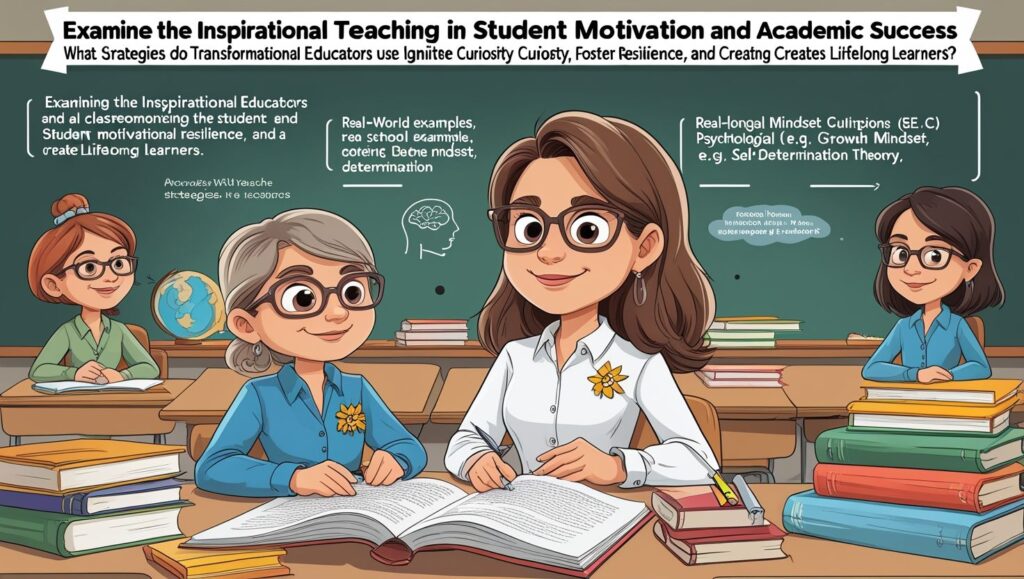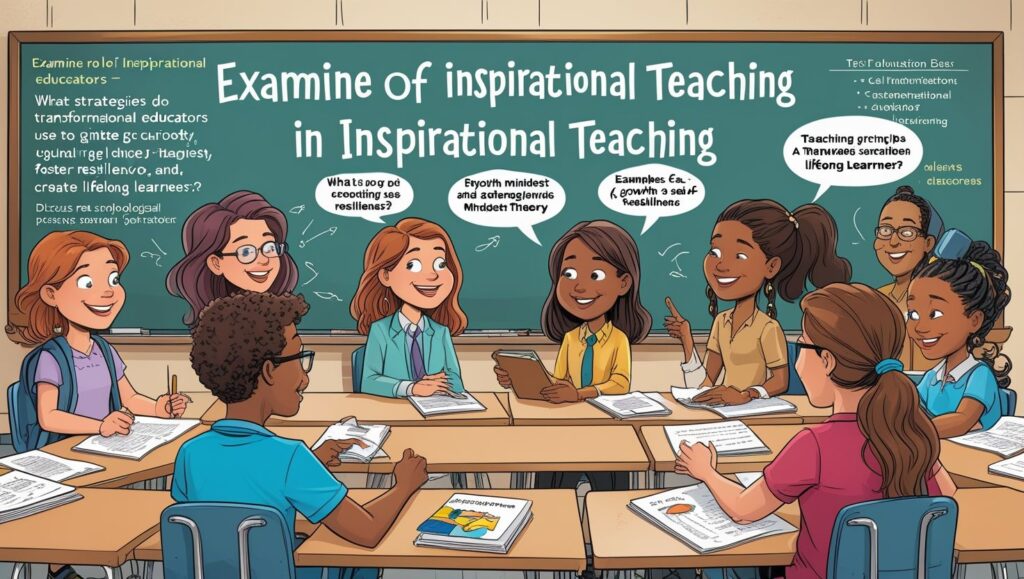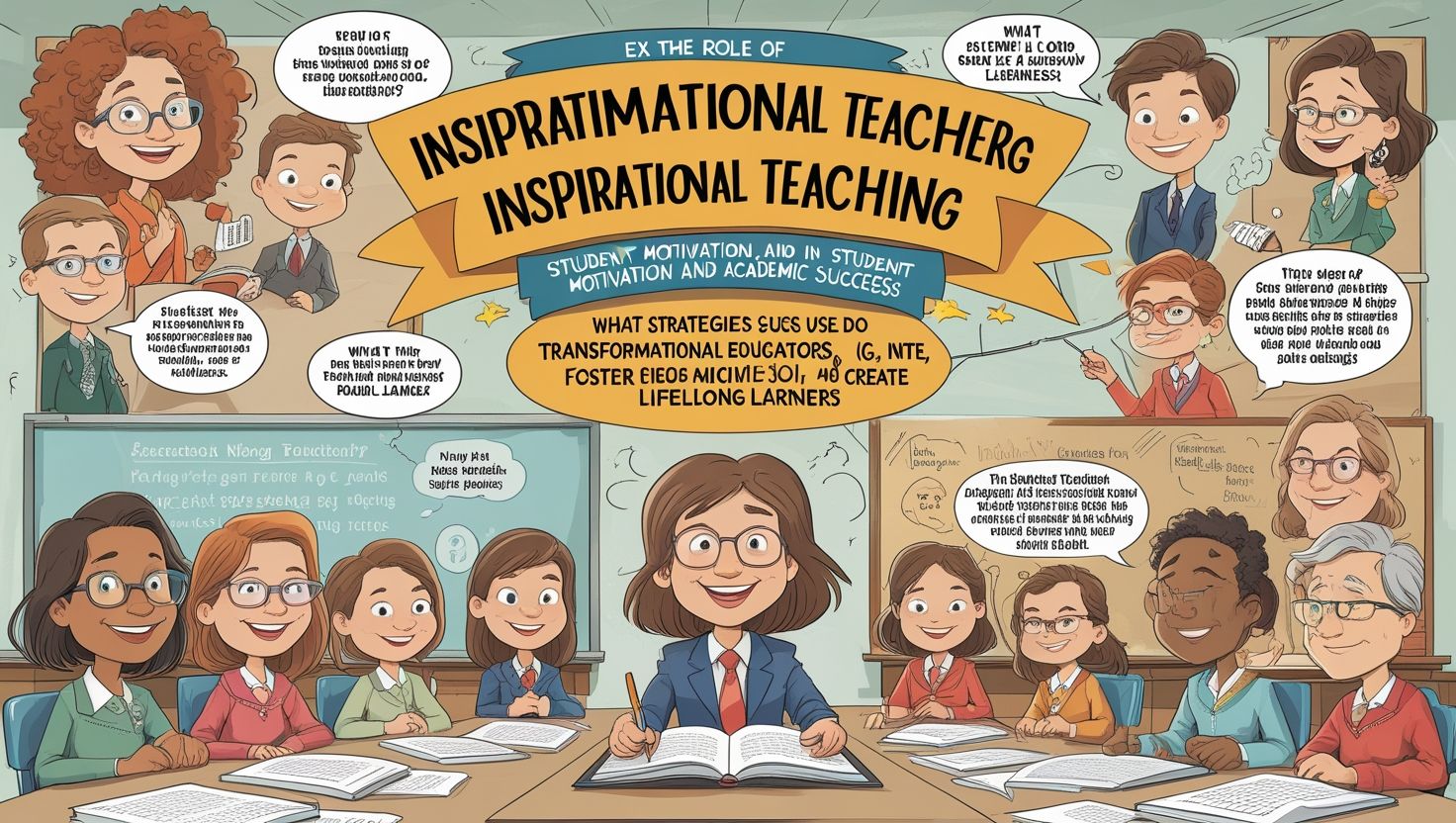Introduction
The Ability to Inspire Students and Transformational Teaching, The ability to inspire students is one of the most powerful qualities a teacher can possess. While knowledge and instructional techniques are essential, inspiration ignites curiosity, fuels motivation, and fosters a lifelong love of learning. Inspirational teachers do more than deliver content—they connect with students emotionally, challenge them to think critically, and help them see their potential. Research shows that inspired students are more engaged, perform better academically, and develop greater resilience (Hattie, 2012). This article explores how teachers can cultivate this transformative ability, examining key strategies, real-world examples, and the lasting impact of inspirational teaching.
Inspiration in education goes beyond temporary excitement; it creates a lasting drive for discovery. Teachers who inspire often blend passion for their subject with deep empathy for their students’ needs. They recognize that inspiration is not a one-size-fits-all approach but rather a dynamic interplay of encouragement, high expectations, and meaningful mentorship. Whether through storytelling, real-world applications, or personal mentorship, inspirational educators leave an indelible mark on their students’ lives. This discussion will delve into the psychological and pedagogical foundations of inspirational teaching, demonstrating how educators can harness these principles to unlock student potential.
Background
The concept of inspiration in teaching has roots in educational psychology and motivational theory. Vygotsky’s (1978) social constructivism emphasizes the role of teachers in scaffolding learning experiences that challenge and engage students. Similarly, self-determination theory (Deci & Ryan, 2000) highlights the importance of autonomy, competence, and relatedness in fostering intrinsic motivation. Teachers who inspire effectively tap into these psychological needs, creating classrooms where students feel both supported and empowered. Historically, great educators like Socrates, Maria Montessori, and Jaime Escalante have demonstrated how inspiration transcends traditional instruction, shaping not just academic success but character and ambition.
Modern research underscores the tangible benefits of inspirational teaching. A study by Klassen & Tze (2014) found that teachers who exhibit enthusiasm and belief in their students significantly boost academic performance and self-efficacy. Furthermore, inspired students are more likely to pursue advanced studies and careers in fields introduced by passionate teachers. However, inspiration is not merely about charisma—it requires intentional strategies such as personalized feedback, relatable storytelling, and fostering a growth mindset (Dweck, 2006). Understanding these foundations allows educators to systematically cultivate inspiration in their teaching practices.
Main Ideas
1. Passion for the Subject
Teachers who inspire often exhibit an infectious enthusiasm for their subject. When educators demonstrate genuine excitement, students are more likely to engage deeply with the material. For example, a physics teacher who conducts live experiments with dramatic demonstrations (e.g., using a Van de Graaff generator to explain static electricity) captures students’ imagination far more effectively than a textbook lecture. Passionate teaching also involves connecting lessons to real-world relevance, such as discussing how mathematical concepts underpin modern technologies like AI or cryptography.

2. Building Strong Teacher-Student Relationships
Inspiration flourishes in an environment of trust and mutual respect. Teachers who take time to understand their students’ interests, struggles, and aspirations can tailor their encouragement effectively. A notable example is Erin Gruwell, the teacher depicted in Freedom Writers, who inspired at-risk students by relating literature to their personal experiences and fostering a sense of belonging. Simple actions, like remembering a student’s hobbies or offering mentorship beyond academics, reinforce that their growth matters.
3. Encouraging a Growth Mindset
Carol Dweck’s research shows that students who believe in their ability to improve (growth mindset) outperform those with fixed abilities. Inspirational teachers frame challenges as opportunities, praising effort over innate talent. For instance, instead of saying, “You’re so smart,” they might say, “Your hard work on this project really paid off.” This approach cultivates resilience and a love of learning.
4. Storytelling and Relatable Examples
Narratives resonate deeply with students. A history teacher discussing the perseverance of figures like Malala Yousafzai or Nelson Mandela can spark discussions on courage and justice. Similarly, science teachers using case studies—like how mRNA vaccine development saved millions—make abstract concepts compelling.
5. Empowering Student Voice
Inspirational teachers create platforms for students to lead. Debate clubs, student-taught lessons, or passion projects (e.g., TED-style talks) build confidence and ownership of learning. For example, a teacher might let students design a community project applying classroom knowledge, reinforcing their agency and impact.

Examples
- Jaime Escalante (featured in Stand and Deliver) inspired underserved students to master calculus through high expectations and cultural relevance.
- Rita Pierson’s TED Talk, Every Kid Needs a Champion, emphasizes how belief in students transforms their self-worth.
- A university biology professor who invites students to co-author research papers instills a sense of contribution to real science.
References
- Hattie, J. (2012). Visible Learning for Teachers. Routledge.
- Dweck, C. (2006). Mindset: The New Psychology of Success. Ballantine Books.
- Klassen, R. M., & Tze, V. M. (2014). “Teachers’ Self-Efficacy: A Longitudinal Study.” Teaching and Teacher Education, 41, 12–24.
Conclusion
The ability to inspire is not an innate trait but a skill honed through empathy, passion, and strategic pedagogy. Inspirational teachers unlock potential by fostering curiosity, resilience, and self-belief. Their influence extends beyond test scores, shaping students’ trajectories and societal contributions. As education evolves, prioritizing inspiration ensures learning remains a transformative, lifelong journey.
Key Questions
- How can teacher training programs better cultivate inspirational teaching?
- What role does school leadership play in fostering inspirational classrooms?
- How can technology enhance (or hinder) teacher-student inspirational connections?
- What policies support teachers in maintaining passion amid bureaucratic demands?
- How do cultural differences influence what students find inspiring?

Your blog has quickly become my go-to source for reliable information and thought-provoking commentary. I’m constantly recommending it to friends and colleagues. Keep up the excellent work!
I read this paragraph fully on the topic of the comparison off newest and previous technologies, it’s amazing
article. https://glassi-india.mystrikingly.com/